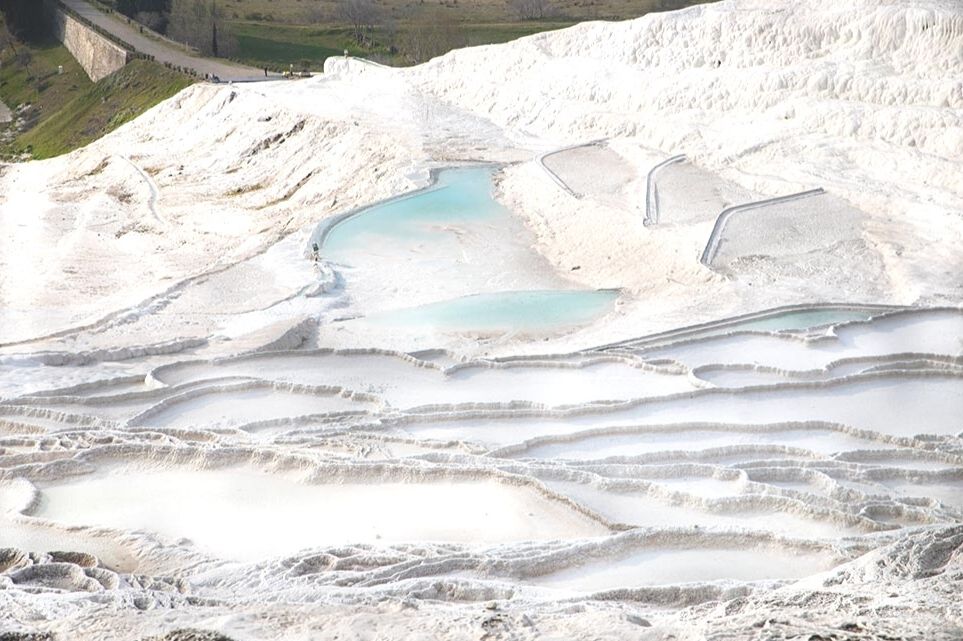
After reviewing many blogs about Pamukkale with photos of the white and turquoise pools on Instagram and other social media platforms, it was time for me to schedule a trip to this popular destination in Turkey. My husband and I had a road trip already planned to Istanbul and decided to make a stop in Pamukkale on our way. We decided on a 2-night stay to see the travertine pools and check out the ancient cities of Hierapolis and Laodicea.
What Exactly is Pamukkale?
Turks gave this region the name Pamukkale which means “Cotton Castle,” because of the similarities of the endless cotton plantations which have been cultivated in this central part of Turkey for decades.
It is a city made up of many natural hot springs of carbonated mineral water that leaves behind calcium which gives the pools a white surface. These are called travertines, a kind of limestone from the minerals of the hot springs water. When the minerals cool and react with the surface, they create travertines. Travertine is a strong material. Romans used it to construct buildings such as St. Peter’s Basilica. Today, Pamukkale is a UNESCO World Heritage site.
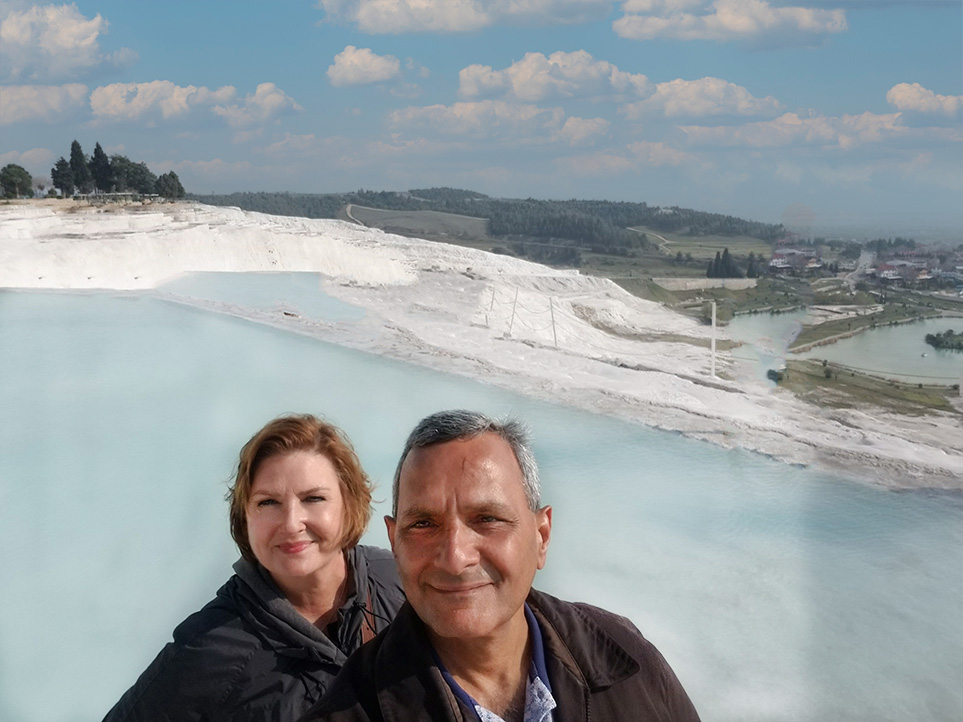
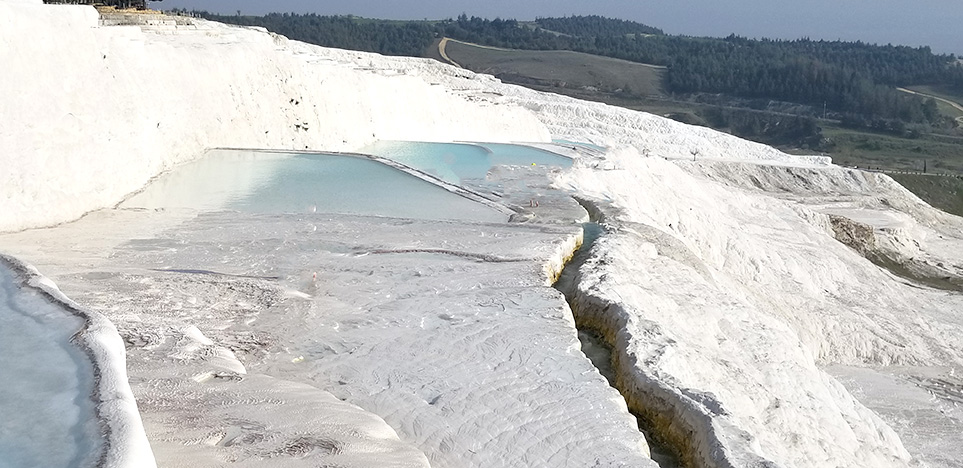
History of Pamukkale
Over 400,000 years ago, Pamukkale was the heart of modern Asia Minor but endured devastating earthquakes. From the horizontal shifts of the land came the hot thermal springs to the surface. As the water evaporated, the minerals left on the surface dried under the sun and created travertines that gave an impression of snow-white rocks on the hillside.
Throughout history, travelers have passed through Hierapolis to experience the wonders of this natural beauty and benefit from the healing waters. The Romans loved it so much here they built a city that surrounds the travertines.
What are the Health Benefits?
Due to the high level of minerals in the water (calcium and sodium bicarbonate), it is believed to help with blood circulation. The waters help with aches and pains such as rheumatism and arthritis and those with skin conditions. Soaking in these warm waters relax you and will help with a good night’s sleep.
Can you Swim at Pamukkale?
Pamukkale Plateau has several shallow pools that you can walk or sit in to relax and enjoy. Most of the pools are shallow, and therefore you’ll only be able to soak your feet. To walk on the plateau you’ll be required to take your shoes off in order to prevent damage to the travertines.
If you want to change into a bathing suit and swim, I suggest you visit the Antique Pool or Cleopatra’s Pool. This is the prime bathing spot and is situated between the ruins. Surrounded by trees and ancient columns, it is an experience you do not want to miss.
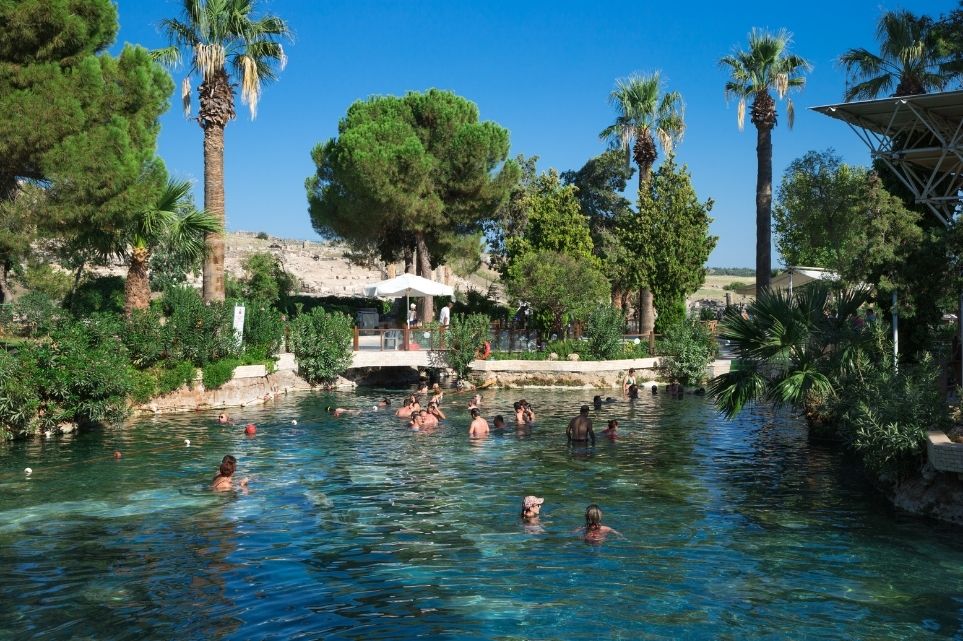
- The entrance fee to the Pool is 20 TL for adults. The Pool is not open all year round and swimming is only allowed between the middle of April until the beginning of October. Changing rooms and lockers available, so make sure to bring a towel and change of clothes.
What else to See at Pamukkale?
Hierapolis
The main attraction is the ruins of the Ancient City of Hierapolis. It is believed to have been founded by the god of Apollo, the name Hierapolis means “sacred city “after its masses of temples. The city’s origins date from the 2nd century BC, but most of the Hierapolis ruins are from the Roman period. There is a mixture of Pagan, Roman, Jewish, and early Christian influences.
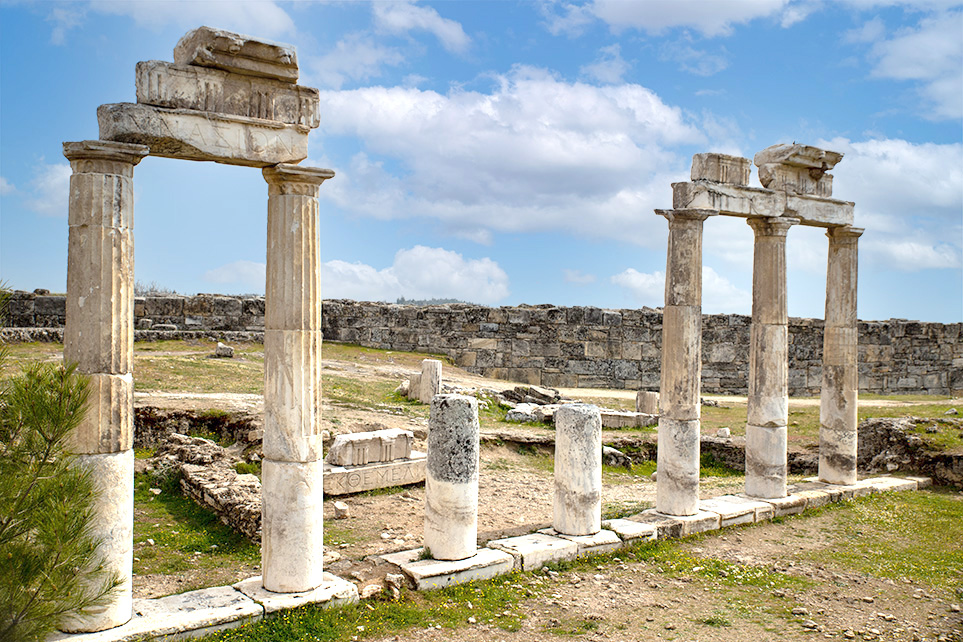
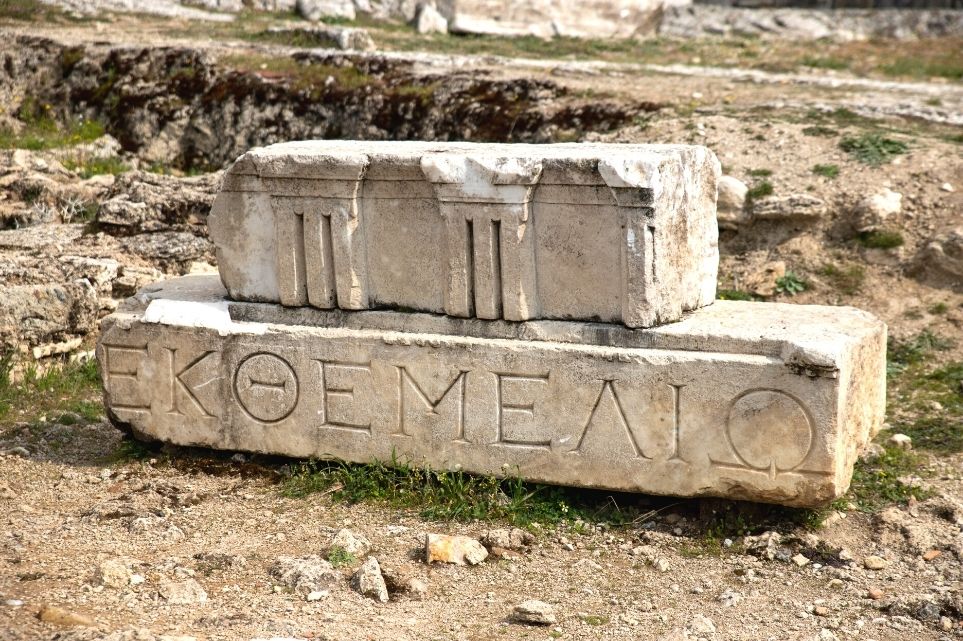
Due to its hot springs, people from the 2nd-century note visiting Hierapolis to soothe their ailments, often staying and never leaving the city. One of the most notable remains to see is the Roman Theatre, where you can see one of the most elaborate stage designs. The Temple of Apollo, Plutonium, Nymphaeum, and Necropolis are spread across the hillside for you to explore. Be prepared to walk a lot!
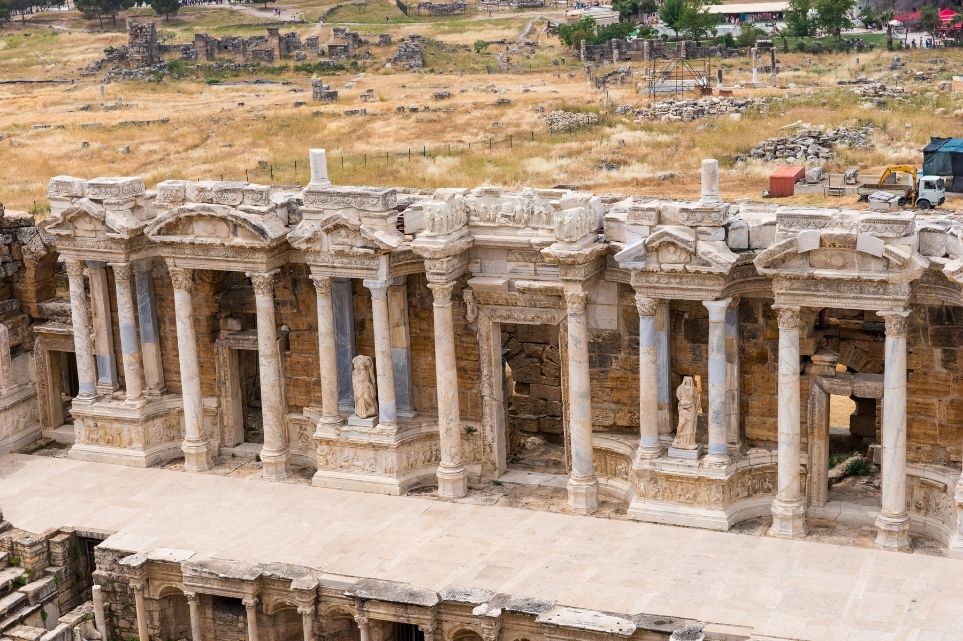
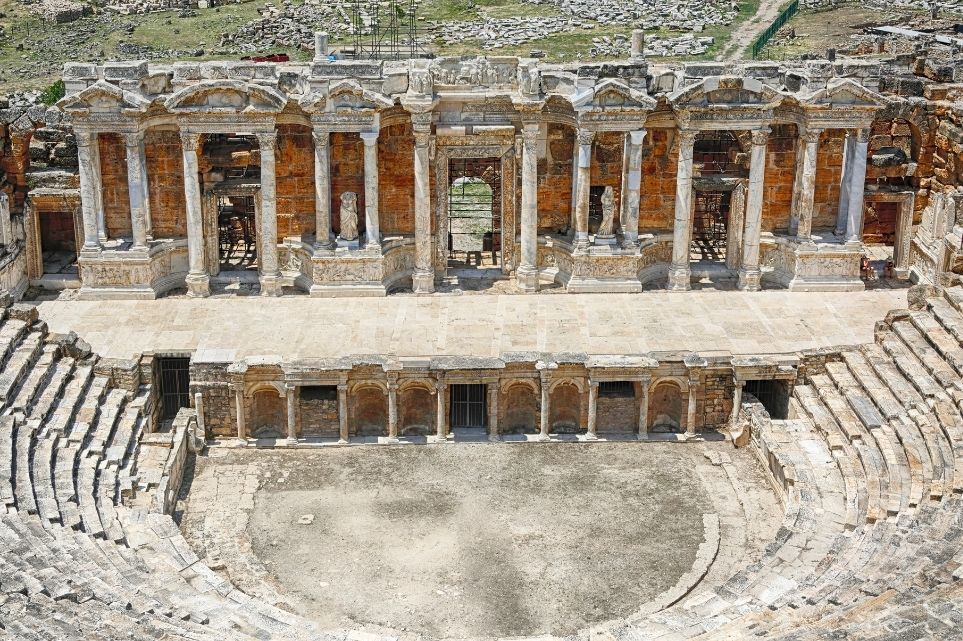
Make sure to step into the Hierapolis Museum as it is definitely worth a visit. Located in the Bath House are three rooms filled with artifacts from Hierapolis, Laodicea, and Aphrodisias. Some of the most ornate sarcophagi can be seen. Outside the museum is a lovely garden area where additional exhibits can be viewed. Again, don’t miss it!
- Hours: Daily from 8:30 am – 7:00 pm (Summer: 6:30 am – 11:00 pm)
- Cost: Small entrance fee of around 12 TL or free if you own a museum card.
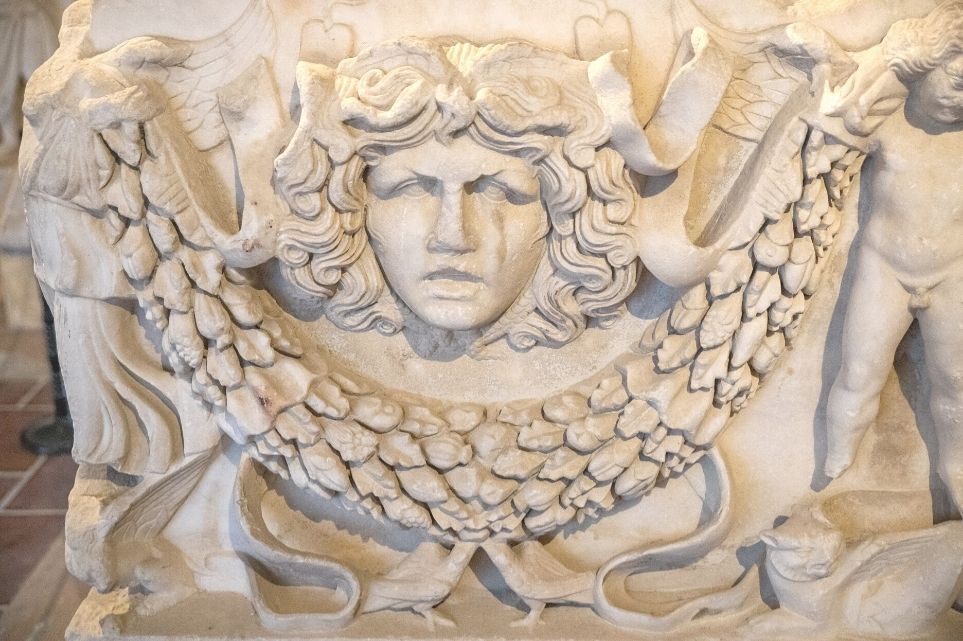
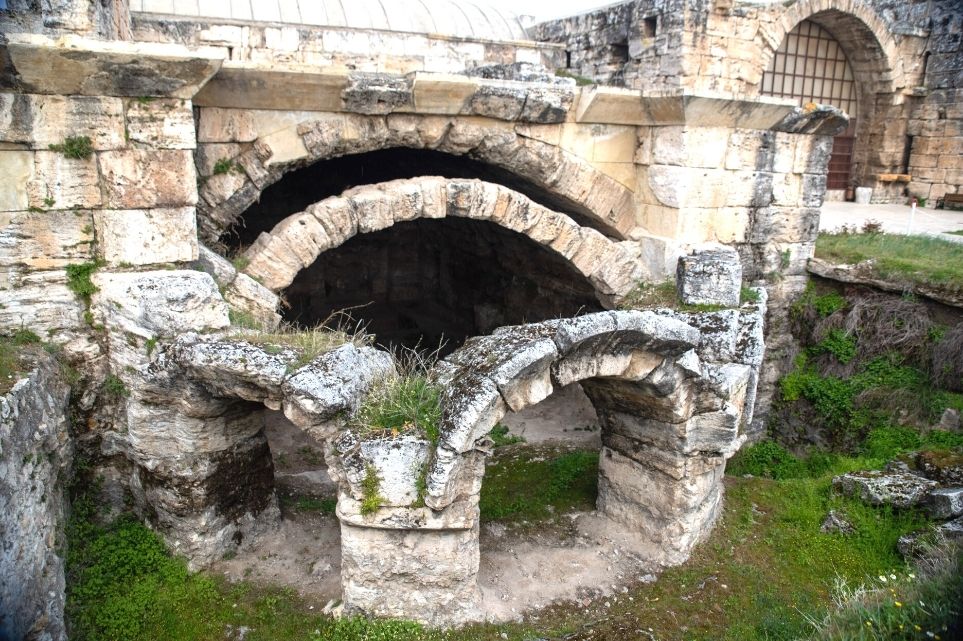
Laodicea
One of the seven churches of the Bible, in the book of Revelations, is in Laodicea. Laodicea is known throughout the world, and its amazing archeological site still being unearthed by archeologists.
It was established off the banks of the river Lycus in 263 BC by Antiochus II. The city was named after his wife, Laodicea.
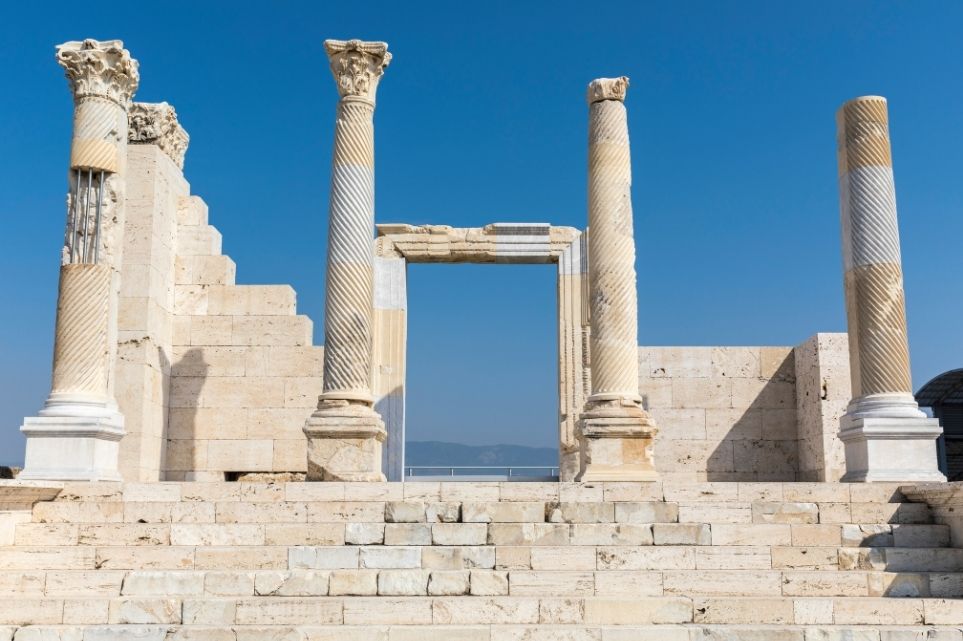
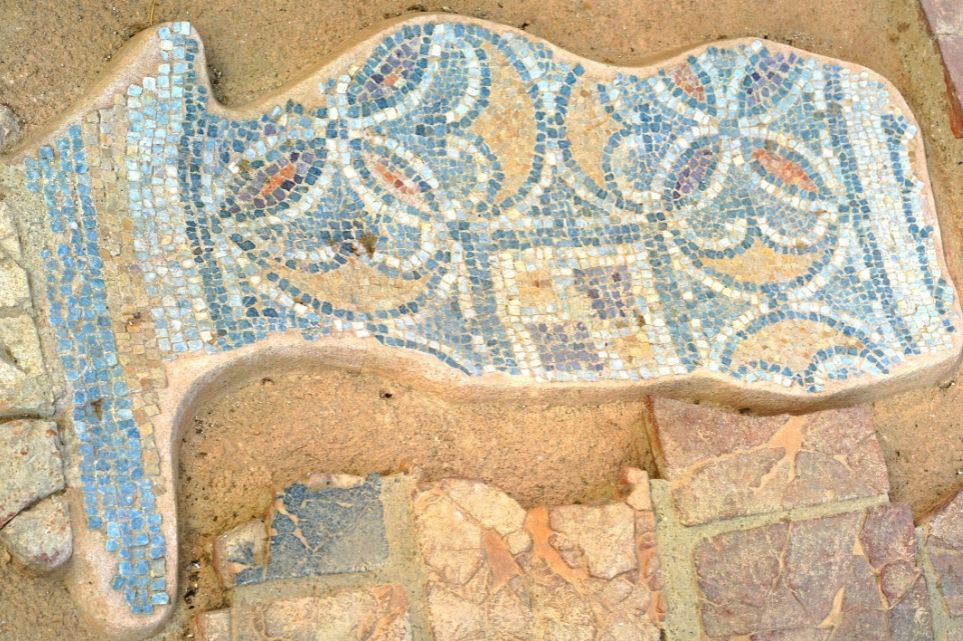
During Emperor Tiberius in 14-27 AD, it was the wealthiest city. With each hit from several earthquakes, the city would rebuild and survive such hardships. During the reign of Emperor Domitian, the city went through a mass expansion of development, creating the Gate of Aphrodisias, Hierapolis Gate, and Ephesus Gate.
In Constantine the Great, 313 AD, freedom was given to Christians to worship, and the city became very important to its followers. The city came to an end during the Byzantines and was abandoned in the 10th AD.
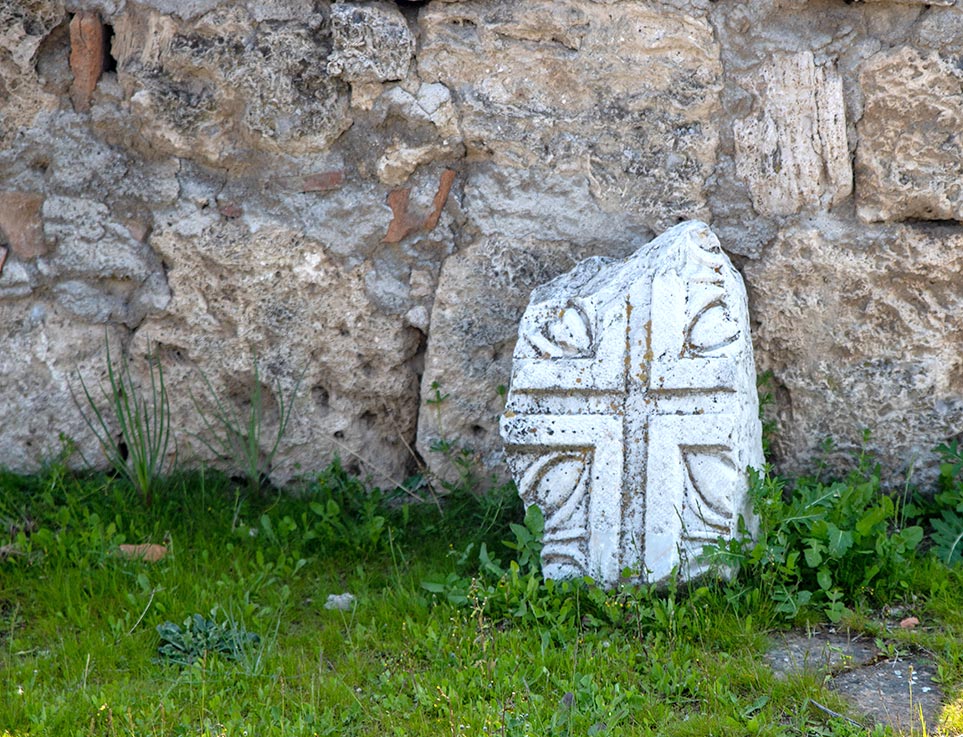
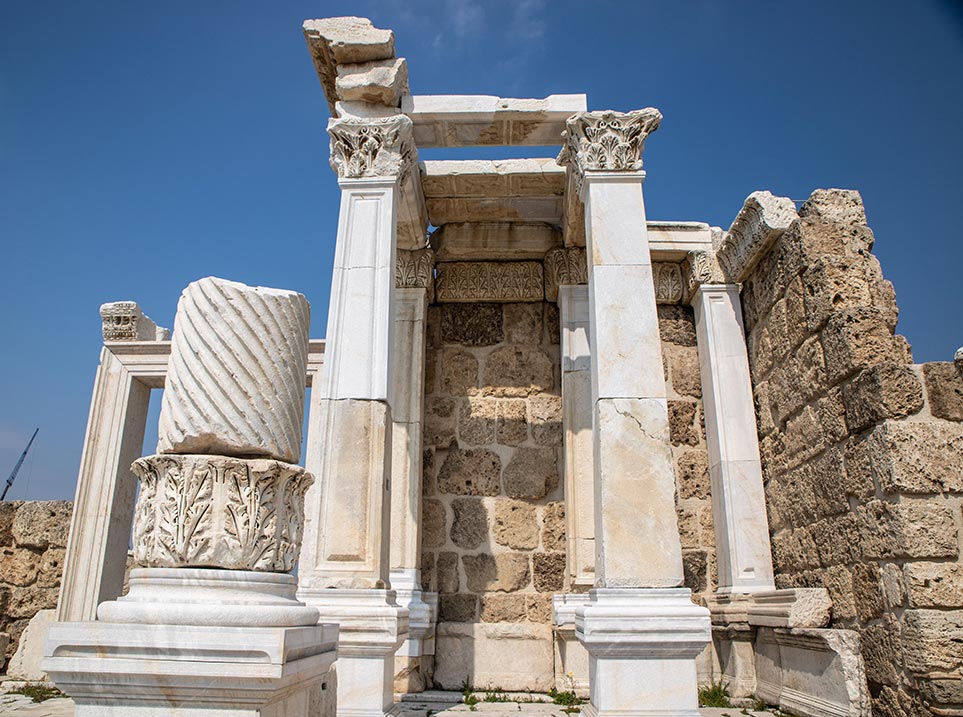
My husband and I found this place genuinely worth the visit. We have been to many ancient cities throughout Turkey, and we both felt this city is one of the best and became one of our favorites… so far!
Plan to spend 2 hours walking the ancient streets as it is spread out over a large area.
Tips: Not a lot of shade, so make sure to wear sunscreen, wear a hat, bring an umbrella for shade & bottled water, wear good walking shoes and loose, comfortable clothes. Food is expensive so bring snacks if you feel you will need them.
- Hours: 9:00 am – 6:00 pm
- Cost: 10 TL per person, Free with Museum Card
What else is there to do in Pamukkale?
If you are an adrenaline junkie and want to add some activities to your itinerary, you may want to consider paragliding or riding a hot air balloon over Pamukkale. Your hotel can assist you with reservations, or you can book through Get Your Guide.
Is a Trip to Pamukkale Worth It?
I would say yes and no! I am a big fan of historical sites, so our visits to Hierapolis and Laodicea were terrific. I read up on Pamukkale before visiting and was aware that all the images I had seen on social media were not exactly how it is, but I wanted to check it out.
The multi-levels of travertine pools are not all with the spring waters as most of the pools are empty. The pools were emptied because of the damage tourists imposed on the travertines by walking on them with their shoes. Some parts of the travertines are yellow and not so pleasant.
Although I am happy with my visit to Pamukkale, I’m much happier that it wasn’t the main attraction of our trip. I think you should visit Pamukkale but don’t make it as the only place you see in this region.
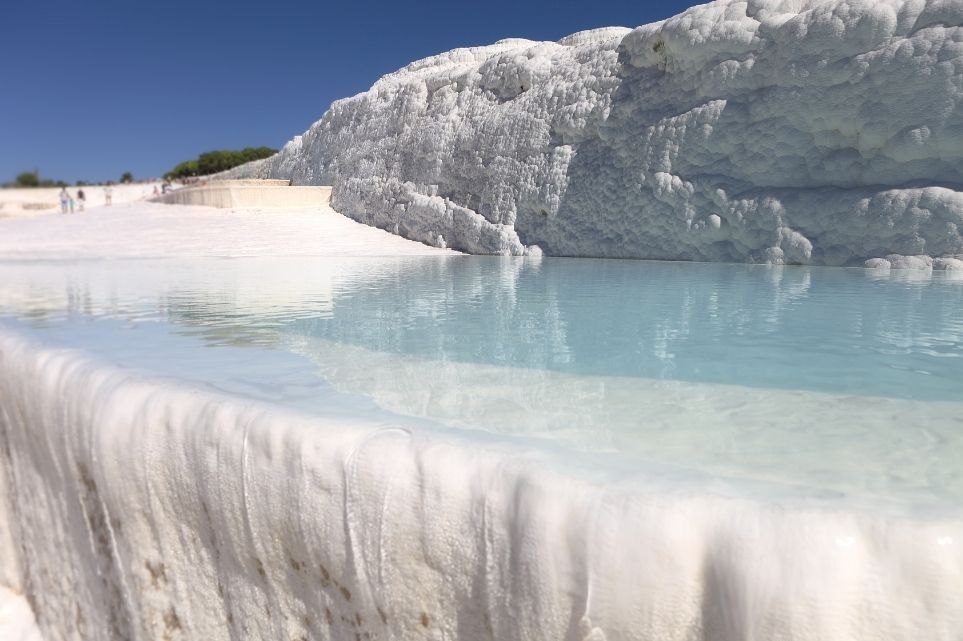
How Long to Stay in Pamukkale?
I recommend no more than a 2-night stay. If you plan to see other cities in Turkey, I think you could get by with a full day and one night in Pamukkale. You could add a balloon ride or paragliding to the itinerary for more activities and such will require additional night stays.
Where to Stay in Pamukkale
If you plan only to be there a few days, my top choice and affordable accommodations are at the Venus Suite Hotel. It had a lovely garden, a nice terrace, and an outdoor pool. The rooms are tastefully decorated with A/C, room service, private parking, and daily breakfast. A free shuttle is provided to Pamukkale’s North Gate.
Best Time to Visit Pamukkale
Spring (April to June) and Fall (September to October) are the best times to visit Pamukkale. The summer months are brutal, and lots of tour buses will be there.
We were there in April, and it was perfect. Although we encountered a small rain shower, it did not interfere with our visit.
Pamukkale Entrance Fee, Schedule of Operation, Tips
Cost: 30 TL per person (if you plan to swim at Cleopatra’s Pool, you will need to pay an additional fee), Free with Museum Card
Hours: April 1- October 1 between 6:30 am – 9:00 pm, the rest of the year between 6:30 am – 5:00 pm.
Wear sneakers (not flip flops) as much of the ground is not paved. Carry a backpack with sunscreen, lots of water, sunglasses, hat, swimsuit, and towel (if you decide to swim). Food is a bit more expensive inside Pamukkale, so bring along snacks if you feel you need them.
No drones are allowed but don’t forget your camera.
Pamukkale is a small town, and everything is within walking distance. If you want to explore Laodicea or any other site, the hotel will most likely be able to assist you with transportation.
Enjoy your travels! Please read my blogs about other exciting places in Turkey and around the world at Traveling Lens Photography.
If you want to read more about Antalya, follow me on Facebook, Instagram, or Pinterest as I share my journey.
Inshallah (God willing!)



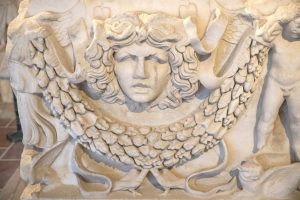
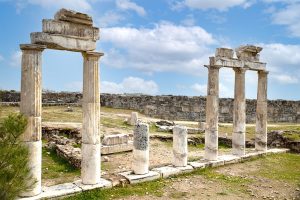
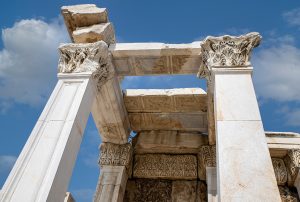
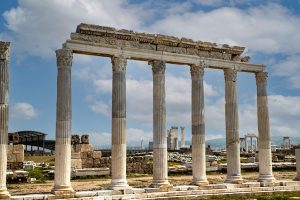
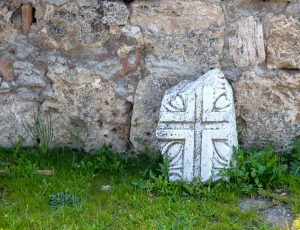
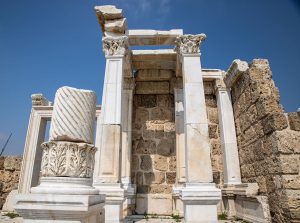
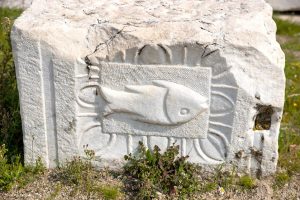
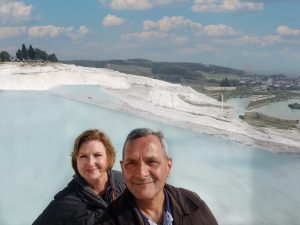
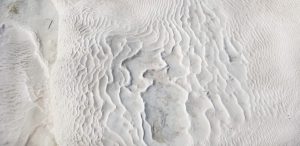
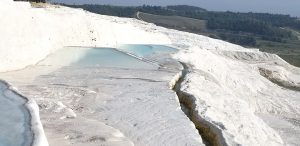
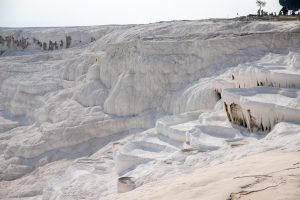
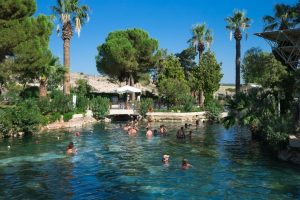
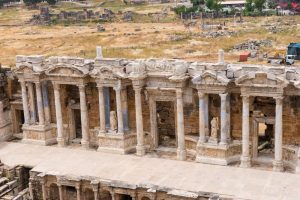
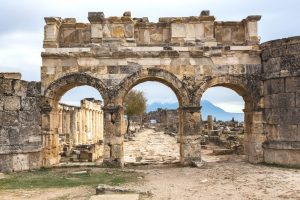
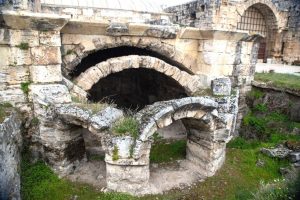
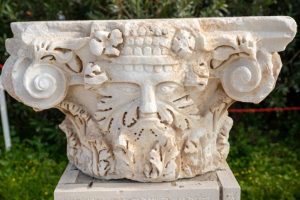
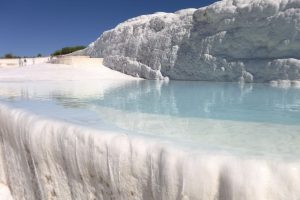
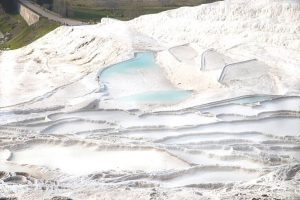
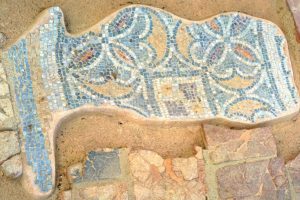
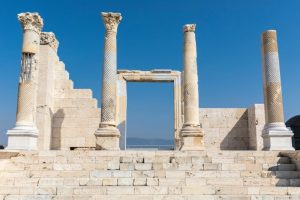
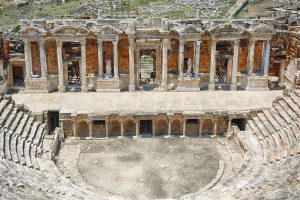
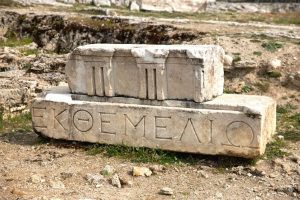


Pingback: Planning a Road Trip Guide - Travel blog | Traveling Lens Photography